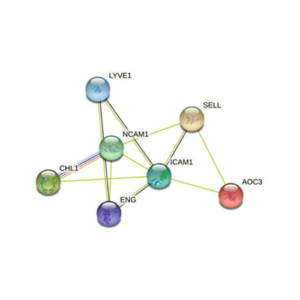 Dr. Andrew Magis is Director of Data Science at the Institute for Systems Biology (ISB) in Seattle WA and is using ‘omics data to monitor the health of individuals, improve understanding of pathological mechanisms, and to discover novel biomarkers capable of identifying disease at its early stages. In a recent editorial article with SelectScience, Dr. Magis describes how his team is using longitudinal proteomics measurements to identify early signals and transition mechanisms of diseases such as cancer, and also discusses how ISB is collaborating with Olink to help improve the accessibility of its expanding proteomics platform to help drive future healthcare developments.
Dr. Andrew Magis is Director of Data Science at the Institute for Systems Biology (ISB) in Seattle WA and is using ‘omics data to monitor the health of individuals, improve understanding of pathological mechanisms, and to discover novel biomarkers capable of identifying disease at its early stages. In a recent editorial article with SelectScience, Dr. Magis describes how his team is using longitudinal proteomics measurements to identify early signals and transition mechanisms of diseases such as cancer, and also discusses how ISB is collaborating with Olink to help improve the accessibility of its expanding proteomics platform to help drive future healthcare developments.
Detecting markers for cancer years before diagnosis
In one major study, Andrew Magis and his team used biobanked samples collected from more than 5,000 “healthy” participants to look for predictive markers of disease that revealed themselves long before clinical diagnosis. As Dr. Magis explains, “This meant that if an individual developed a disease while they were enrolled in the program, we could analyze the samples that we’d already collected to see if we could find early signals of the disease.” In a recent study to identify early signs of metastatic cancer, longitudinal samples were analyzed for levels of ~1200 proteins using Olink to identify specific proteins that persistently presented as outliers, constituting early signals of different cancers. The remarkable output from this study is best summed up by Dr. Magis himself, “One protein in particular, the tumor marker CEACAM5, emerged as a significant outlier across three different metastatic cancer types, breast, lung, and pancreatic, in some cases more than two years prior to the diagnosis”
Expanding high-throughput proteomics technology
After the successful use of Olink technology in his studies, Dr. Magis also goes on to explain how he and his colleagues at ISB have now set up the latest high-throughput platform, Olink Explore 3072, in their Molecular & Cellular Core Facility, and how he sees the future for this technology. “We’re really excited about the deployment of Olink’s Explore platform. Continuing the expansion in the sampling of more biological domains and relevant pathways will be incredibly valuable, both from a research perspective and if these technologies are ultimately incorporated at the clinic. The future vision of all of this is that you get a small drop of blood or a regular draw at the doctor’s office which is then able to provide a window into the state of your body.”

